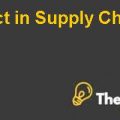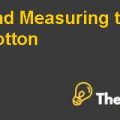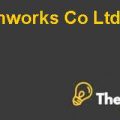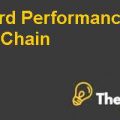
ANSWER TO (A)
Tariff is the tax or duty that is to be paid for a class of imports or exports. Considering the market of Barley in China, the exports of barley to China are almost 9% of the exports of agricultural products of Australia. China is allowing a tariff free import of barley form Australia, which is encouraging the producers of barley in Australia to export more barley to China. Before the free trade agreement between China and Australia, Australian exports were paying 3% tariff on barley.
In a perfect competitive market, all the sellers are selling the same product. There are large numbers of sellers in the market as well as the price in the market cannot be influenced. Therefore, in such type of a market, Australian suppliers cannot dominate the market and would have to work on the prevailing prices.
When tariff was imposed on imports of barley by China, the prices of barley increased due to rise in price of barley. When the price of barley increased due to tariff, it reduced the demand for barley. Tariff is imposed for a number of reasons, which includes, supporting the local industries or increasing tax revenues from such products.
When the tariff is removed from the barley imports by the government under the free trade agreement, the suppliers of barley will be exporting more barley to China as no tariff is to be paid by them and they can compete with the local market of china without the biased effect of tariff. As the prices will reduce the removal of tariff, the demand for barley will increase and the suppliers will be considering supplying more barley to China.
The effect of this on the market of Australia might be that the suppliers will be looking towards exporting barley to China as they might be earning more on exports than the local markets. This might encourage the suppliers to export more causing a shortage in the local market; this also has a counter effect on the price of barley to increase.
The price of barley is considered to be $120 per ton before tariff and after tariff the prices of barley are $123.60. The increase in prices due to tariff will make the customers demand less barley.
ANSWER TO (B)
(1) The difference between old and new prices is due to the removal of tariff. Due to the tariff, the prices of barley were biased and the customers were being charged higher prices and in effect of this the demand for the product decreased. When the prices will decrease, the demand for the product will increase more than the proportionate change in price if the product has an elastic demand and the revenues will increase as compared to before. If the price of the product is increased and the product has an elastic demand, then the revenues will reduce due to the fall in demand more than the proportionate change in price.
(2) When the price of barley decreases due to the removal of tariff, then equilibrium quantity will increase as the customers will be willing to buy more quantity at the prevailing prices after the removal of tariff. Suppliers will be willing to supply more as they would be gaining more from their product at the prevailing prices. If the product has an elastic demand, then a fall in the price would affect the demand to increase more than the proportionate change in price and if the demand is inelastic an increase in price, then this will cause the demand to reduce less than the proportionate change in price causing the revenues to increase.Supply, Demand, And Changes In The Equilibrium Case Solution
(3) In this case, we have assumed that the price of barley is $120. Tariff is assumed to be 3% so the rate after tariff will be $123.60. The quantity of exports at this price is 160 million tons therefore;the amount of exports will be equal to $19,200 million before tariff. The quantity of exports after tariff will be 150 million tons so the amount of exports will be $18,540 million. There is an increase in the amount of exports after removing tariff, the increase is of $660 million. The demand for the product depends upon the nature of the demand that the product has; if the demand for the product is elastic, then it would be preferred to decrease the price so that the revenues increases. If the demand for the product is inelastic, then it would be preferred to increase the prices of the product to increase the revenues....................................
This is just a sample partial case solution. Please place the order on the website to order your own originally done case solution.










